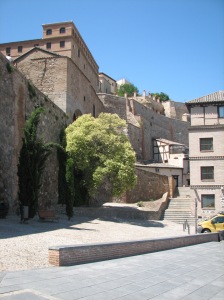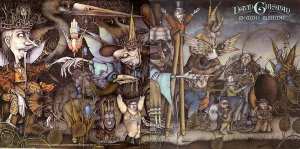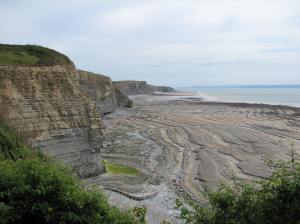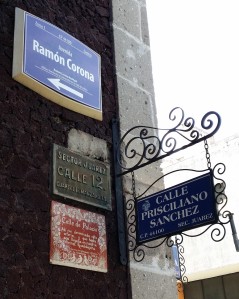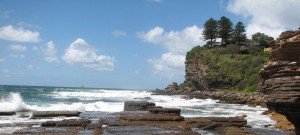
Lily pond, Kew Gardens, London, July 2015
I recently attended a teaching workshop at UTS’s Institute for Interactive Media and Learning (IML): ‘Active & collaborative learning in the classroom’. One of the key takeaways was the importance of getting off on the right foot from day one: set tone (friendly, collegial, ready to work), and be well organised. I then did something I have not done for years, since the days when I used to teach Spanish at university: I walked into the classroom (3rd year subject in a double degree) with a detailed tutorial plan. I had devised a mix of student group activities, general classroom discussion, and short tutor instruction pieces. The assessment tasks in this subject are: critical literature review (30%); group cultural case study (40%); reflective e-journal (30%).
3 new things I did:
I began by getting students to introduce themselves and say why they had chosen a Latin American Major and what they were passionate about. One of the tips I picked up at the IML workshop was to get students to write down 3 things they were excited about as the subject began and 3 things they were anxious about. Students discussed their individual responses among each other on each table; then we had a classroom discussion based on the brief summaries of each table’s responses. It worked a treat. Not only did it act as another icebreaker (with humorous interludes), but it was a mini-diagnostic exercise for adjusting their expectations against the subject and vice versa – I told them what I am both excited and anxious about. (Some sample responses follow below at the end of this post).
The other thing I did was invite an education technologist from IML to brief the students on using Google Drive as a way of warehousing their draft group case studies. Some had used it before, but most had not. She explained the flexibility and other features of Google drive and Google Docs as well as made comments on using a reflective e-journal (new assessment task this year instead of the tired old standard in-class test). I also learned a lot from the session.
I arranged for an ex-student to turn up halfway through the tutorial. He has done this subject before (2013) and spent 2014 on In-Country Study in Mexico. I asked him to address the students about his experiences and also to display some of his own work, including a great, reflective blog he did while in Mexico. He is currently doing some part-time work for me as a research assistant and is also co-creating subject content. Students thus got a chance to see what success is like and also ask the student speaker about other aspects of his work and learning experiences.
Students are excited about:
- ‘meeting those going to the same country’ (they do a year of In-Country Study in Latin America);
- ‘no exams!’ (old pedagogy for me)
- ‘a class environment where critical thinking is encouraged’
- ‘using the knowledge to further my career’; ‘potential for career’ (we discussed being conscious of the leverage to be obtained from the subject for career opportunities)
- ‘blogging and use of WordPress’ (for reflective journals)
- ‘group work’; ‘working with the group to produce the final project’
- ‘preparation of research project – exciting ideas, blogging’
- ‘new perspectives on cultural issues’
- ‘seeing similarities and differences [in Latin America] with Aust/Sydney’
- ‘becoming more historically aware’
- ‘different style of learning and assessments’ ; ‘excited to experience a different way of learning’ [I explained that this is a flipped learning environment]
- ‘doing a case study’
Students are anxious about:
- ‘achieving the assignment outcomes – understanding what is required’
- ‘that I won’t fully understand the readings or grasp the main concepts’
- ‘studying history as I found it boring in High School’ [challenge is with me as tutor]
- ‘creative presentations’ [I have an ex-student as well as myself to guide them]
- ‘group work’; ‘group assignments’
- ‘understanding how to write a critical literature review’; ‘literature review’ [no probs – sample work form previous students on blog site and we will workshop reviews – scaffold up]
- ‘analysing and summarising effectively the readings’ [on the case – a guide to reviewing and critiquing academic texts is available and we will workshop an example in class]
- ‘technology intimidation’; ‘using new technology tools’; ‘using new technology for a range of purposes’; ‘setting up an online blog – not my forte’ [IML has provided dedicated Faculty help for this. This morning I invited an IML education technologist to brief students on using Google Drive and Google docs to do group work. In addition, the ex-student and I will guide them in using various possible digital platforms for work presentation]
- ‘time management’; ‘workload’; ‘not having enough time to focus on subject as much as I’d like’ [I will direct them to: ‘Study Less Study Smart’ https://www.youtube.com/watch?v=IlU-zDU6aQ0]
- ‘contributing to an e[learning]journal to keep it to a high standard’; ‘keeping an adequate journal of work’ [clear and thorough guidelines provided, but no samples to view yet as this is the first year with this assignment]
- ‘coming from a design background into a world of essays and seated tutorials’
- ‘being culturally appropriate and not passing judgement on other cultures’ [they will learn it is okay to pass judgement – we do it all the time – the question is ‘how we do it’ and do we know enough about that culture to make such judgments? Need to avoid reverse cultural cringe].
I have some great feedback to work with here and we have barely begun. (Thanks to PK and AS from IML and JS from the BA International Studies).
